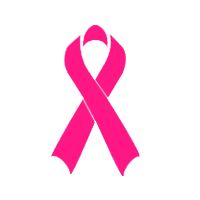National Ultrasound
How Ultrasound Assists in Breast Cancer Screening and Diagnosis
In honor of October’s National Breast Cancer Awareness month, we are bringing you some of the latest 2020 data on breast cancer in the US and info about how ultrasound is used in the screening and diagnosis of breast cancer.
Breastcancer.org reports:
- About 1 in 8 U.S. women (about 12%) will develop invasive breast cancer over the course of her lifetime.
- In 2020, an estimated 276,480 new cases of invasive breast cancer are expected to be diagnosed in women in the U.S., along with 48,530 new cases of non-invasive (in situ) breast cancer.
- About 2,620 new cases of invasive breast cancer are expected to be diagnosed in men in 2020. A man’s lifetime risk of breast cancer is about 1 in 883.
Breast Cancer Screening Methods – Mammogram vs. Ultrasound
Mammogram
Today mammogram is still considered the most effective and widely used screening process in the detection of breast cancer. The process involves injection of a contrast dye and x-ray of the breast to identify masses that could be a potential cancer and need further investigation.
Breast Ultrasound
There are cases where ultrasound is used as the first option in the screening method. These cases are when a patient is pregnant and cannot be exposed to the radiation they would be exposed to with a mammogram or for screening patients who are allergic to contrast dye which is used in mammograms. While ultrasound is not widely used in the initial screening process of breast cancer it certainly plays an essential role in the medical community’s job to confirm diagnosis when abnormal results have been identified in a mammogram.
Ultrasound Furthers the Screening Process
Healthcare providers often recommend an ultrasound when a mammogram has detected abnormal results for further examinations and potential biopsy of a suspicious mass. An ultrasound technician will place a transducer on the breast moving it about to pick up diagnostic imaging of the interior of the breast. This is done through echolocation whereby sound waves are transmitted into the interior of the breast tissue and will bounce back highlighting abnormalities not generally found in healthy breast tissue. If an abnormal result is detected, such as a mass it will then need to be determined if this mass is a fluid-filled cyst or a solid tumor.
Sometimes in these cases, a needle biopsy will be performed to take tissue from a mass, remove fluid from a cyst, or additionally scan nearby lymph nodes to look for anomalies. The results from these important screening processes will be sent to a pathologist or reviewed by a radiologist.
Early Detection
Very sadly, most of us know someone who has lost their battle with breast cancer or is actively fighting this devastating disease. Here at National Ultrasound our hearts go out to everyone affected in one way one another, and we wish you strength. While we wish for a cure today, for now, early detection is what will save lives. Until we have the cure we all wish for we are ready to do our part in assisting the healthcare community with screening and diagnosis.
Who is National Ultrasound?
Since our founding in 2003, we at National Ultrasound have focused on a single product category: new and used ultrasound systems, parts, and transducers. We are a company of technicians with more than 250 years of collective experience working with equipment from the six largest ultrasound manufacturers.
Our focus on being the best and most knowledgeable in a single industry is what has led to our position as the #1 dedicated ultrasound supplier in the United States and allows us to provide the best equipment and service to healthcare professionals across the globe.
Our mission is to continually provide the medical community with quality ultrasound equipment and services at the lowest possible prices.
